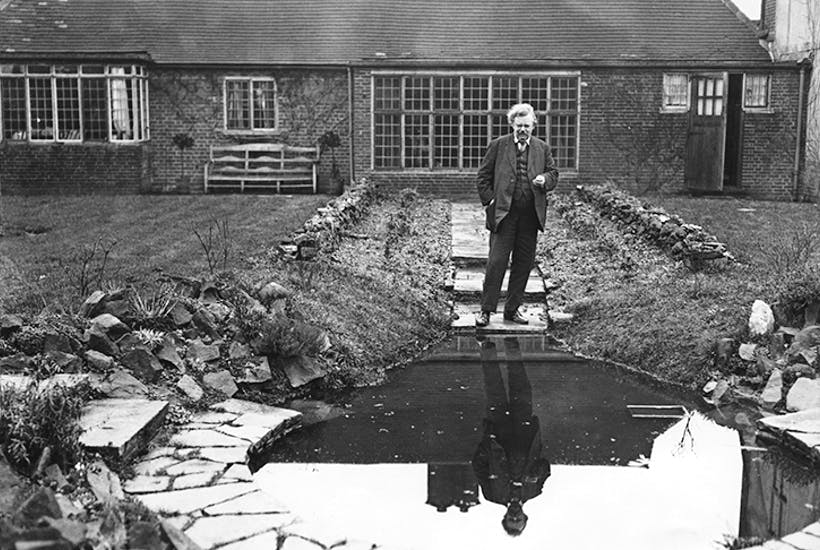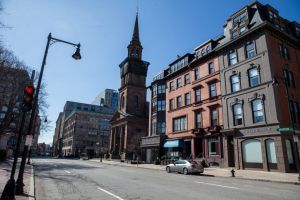It’s a quiet Wednesday afternoon in Beaconsfield, Britain’s most expensive market town and the burial place of Edmund Burke. There’s a sense of foreboding in the air. Well, there is if you’re a G.K. Chesterton fan. South Buckinghamshire District Council is about to decide whether Overroads, the house where the author lived from 1909 to 1922, will be demolished and replaced with an apartment block.
A Londoner until the age of 35, Chesterton moved here on a whim. He and his wife, Frances, in a spirit of adventure, went to Paddington station and asked to buy a ticket for the next train. It was going to Slough, the town that John Betjeman once invited friendly bombs to fall on. From there, the Chestertons wandered to Beaconsfield, and liked it so much they never left.
It was at Overroads that Chesterton first developed his most enduring creation, the priest-detective Father Brown. Yet the biggest protest against the demolition plan has come not from fans of crime fiction, but from the academy. Thirty-nine scholars have signed an open letter asking the council to defend ‘so important a piece of national and international cultural heritage’.
In Jungs Bakery I probe the psychology of Alison Wheelhouse and Kari Dorme from the Beaconsfield Society, a local group who do everything from litter-picking to scrutinizing planning applications. Dorme says the town council has a poor record with protecting local heritage: Enid Blyton’s former house, for instance, was knocked down in 1973. ‘We could have had a world-famous heritage site,’ she says. Robert Frost’s old bungalow, meanwhile, was demolished in the 1980s. So does Overroads have a chance? ‘Oh yes,’ says Wheelhouse. ‘We’re very hopeful.
Chesterton’s house has more than just literary significance. Overroads has been immortalized by his biographers as an innocently bohemian haven where friends were always welcome and strangers soon became friends. Literary parties, garden parties, children’s parties, charity fundraisers and amateur theater productions filled the calendar. ‘The benevolence and love in the air were unmistakable,’ a neighbor recalled, ‘and irresistible.’
Overroads was too small to contain the Chestertons’ social life: they eventually built a bigger house in a similar style, directly across the road, and moved into it.
That second house, called Top Meadow, is itself now a listed property — a point which its owner, Ken Sladen, has stressed in making the case against demolishing Overroads. Knocking down Chesterton’s first home, he says, would affect the character of the second.
Finally the council decides: Overroads will not be demolished. ‘We’re very, very pleased,’ Sladen tells me down the phone. He says he’s been heartened by the public response, both locally and internationally. It isn’t always the case when cultural landmarks come under threat, he observes. ‘You often notice when it’s too late.’
The developers, asked whether they will appeal, decline to comment.
This article is in The Spectator’s April 2020 US edition.


















